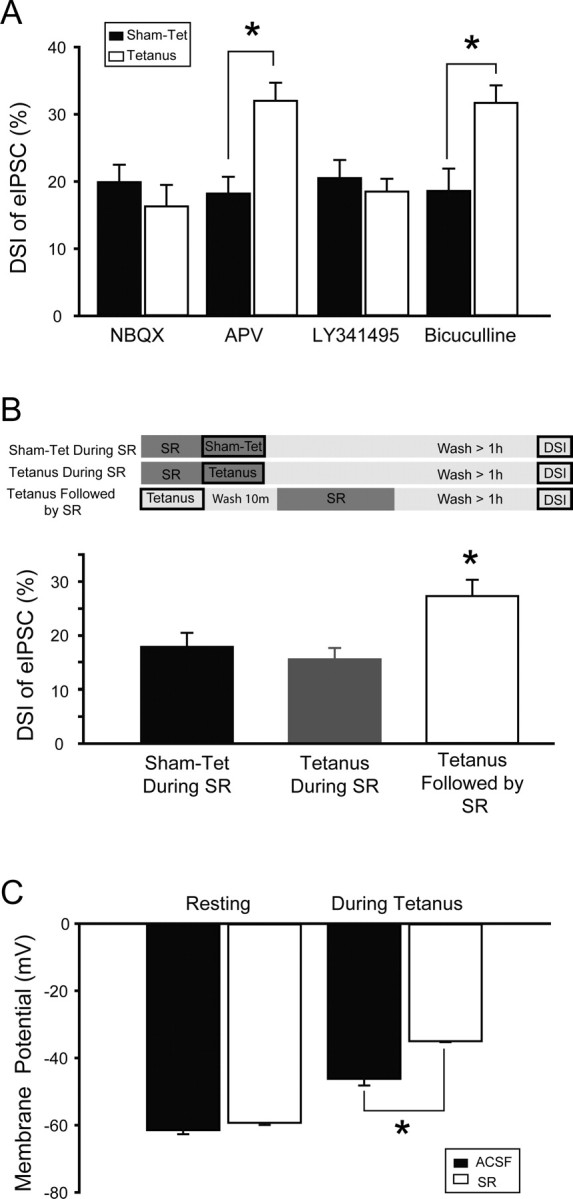Figure 4.

Activation of AMPA/kainate, mGluR, and CB1 receptors is required during tetanus for potentiation of DSI. A, Tetanus-induced potentiation of DSI is blocked when NBQX (5 μm), an AMPA/kainate receptor antagonist, or LY341495 (200 μm), a broad spectrum mGluR antagonist, is present during tetanization. Blockade of NMDARs with APV (10 μm), or blockade of GABAA receptors with bicuculline (10 μm) during tetanization does not prevent potentiation of DSI. B, Potentiation of DSI is prevented when SR141716, a CB1R antagonist, is present during tetanus (SR was applied for 6 min, which was followed by a >60 min wash in ACSF). To exclude the possibility that this effect was caused by an incomplete wash out of SR from the slice, a control experiment was performed in which tetanus was applied in the absence of SR, followed by a 6 min perfusion of the slice with SR, followed by a 60 min wash with ACSF (tetanus followed by SR). The presence of potentiated DSI in this experiment indicates that SR can be completely eliminated from the slice with a 60 min wash. The top panel demonstrates experimental protocol, where dark boxes indicate presence of SR in extracellular medium. C, The presence of SR during tetanus does not decrease the effective activation of excitatory afferents. In fact, SR did not change the pretetanus resting membrane potential, but the average membrane potential during tetanic stimulation was depolarized in the presence of SR and, as detailed in the text, the number of action potentials elicited by each tetanic train was also increased in the presence of SR.
